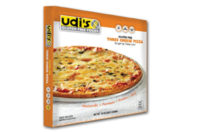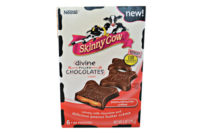Flavors of Life

Butter flavoring in microwave popcorn has been the latest ingredient to enter the realm of negative opinion. New research on pentanedione (PD), the ingredient which imparts microwave popcorn its flavor and aroma, found it to be a “respiratory hazard that can also alter gene expression in the brain of rats.” That summary came from a study published in the September 2012 issue of The American Journal of Pathology. It further expounded that acute PD exposure has respiratory toxicity comparable to diacetyl in laboratory animals.
"Our study demonstrates that PD, like diacetyl, damages airway epithelium in laboratory studies. This finding is important because the damage is believed to be the underlying cause of bronchiolitis obliterans," said lead investigator Ann F. Hubbs, DVM, PhD, DACVP, Health Effects Laboratory Division of the National Institute for Occupational Safety and Health, Centers for Disease Control and Prevention, Morgantown, W.Va. "Our study also supports established recommendations that flavorings should be substituted only when there is evidence that the substitute is less toxic than the agent it replaces."
The butter flavoring diacetyl, itself, has come under fire in recent weeks. An August 2012 study published in Chemical Research in Toxicology found it increases the type of protein clumping associated with Alzheimer’s disease. In this case, however, the researchers were less sure if consuming diacetyl in products such as microwave popcorn can cause problematic levels of the chemical in the body. Instead, they expressed concerns about food industry workers’ “chronic exposure” to the ingredient.
Such negative press may prompt consumers to turn to products featuring flavors perceived as healthier, and the healthful aura surrounding natural flavors (and colors) has been part of the story behind their continued sales increases, even in the midst of a troubled economy.
According to the MarketsandMarkets report "Global Natural Colors and Flavors Market by Types, Applications and Geography: Forecasts up to 2017," the worldwide natural flavors market generated revenues of roughly $3.6 billion in 2011, and the research firm predicts that number will surpass $5 billion by 2017, with a compound annual growth rate of 6.2% between 2012-17. The report predicts, “The demand for natural flavors is expected to rise in North America due to an increase in regulations banning artificial flavors.” (Natural color revenues are expected to rise at an even faster clip: 10.4% annually from 2012-17, to grow from 2011’s $732 million to reach $1.3 billion by 2017.)
Natural positioning may be a route to flavor success, but one recent study suggests a predilection for certain food flavors may well be a form of self-medicating. Evaluating more than 1,700 substances that comprise the flavors of common foods, the research elaborates on a wealth of evidence indicating mood-enhancing effects from blueberries, chocolate, raspberries, strawberries, teas and other so-called comfort foods.
"The tendency to depression in its many forms has increased due to our stressed society, [and] antidepressants are effective for only 50-60% of patients," said study author Karina Martinez-Mayorga, who initiated the study while at the Torrey Pines Institute for Molecular Studies, in San Diego. "All this suggests the need for creative and new strategies," she added. "I'd like to emphasize that our primary interest is in flavors for enhancing mood in normal, healthy people during 'down times' not [associated with] clinical depression."
Presenting the results in late August at the national meeting of the American Chemical Society, Martinez-Mayorga explained, “Molecules in chocolate, a variety of berries, and foods containing omega-3 fatty acids have shown positive effects on mood. In turn, our studies show that some commonly used flavor components are structurally similar to valproic acid [a widely used prescription mood-stabilizing drug].”
Of course, it is the incorporation of those flavors that ultimately influences the mood and, in particular, the purchase decision. Interestingly, several new products are bringing unexpected flavor twists to some traditional foods. Peanut butter, for instance, now features Cinnamon Raisin Granola Nut, Banana Granola Nut and Berry Nut varieties under the Planters Nut-rition label. These products also promise 6-7g of protein per serving and at least five vitamins and minerals.
In a world with cupcake-flavored vodka from Underdog Wine & Spirits, as well as bubblegum and candy cane flavored vodkas from Georgi, it should be little surprise to see the latter add a waffle-flavored version of the adult beverage. After all, Smirnoff has introduced Fluffed Marshmallow and Whipped Cream options to its vodka line. Not to be outdone in the area of breakfast flavor innovation, Smucker’s has introduced a maple-bacon flavored syrup: nothing alcoholic, purely a salty-sweet syrup, though one boasting 24g of sugar per 120-calorie serving.
New flavors can be a raging success, but a familiar flavor in a new application can be just as rewarding. Taco Bell, for instance, has sold more than 200 million Doritos Locos tacos since its March debut, making it the most successful launch in the chain’s history.
And here’s a new twist: social media allows manufacturers to reach consumers in new ways and engage them in flavor creation.
AriZona Beverages USA allowed fans to vote for a favorite from among three flavors (eventual winner Cherry Lime Rickey, Orange Creamsicle and Chocolate Fudge Float) at its 20th anniversary website, and the winning formula will grace shelves at participating 7-Eleven stores through mid-November. A similar campaign on Facebook led to Peach-Mango and Raspberry Lemonade being the next Dum Dums flavors, and Frito-Lay is in the process of offering consumers the chance to go online and propose a new flavor of Lay’s potato chips. The winning chipmaker earns $1 million or 1% of the 2013 net sales of the new chip flavor, whichever is more. All are proving to be excellent examples of ways to promote new flavor varieties and tie consumers to those launches.
Looking for a reprint of this article?
From high-res PDFs to custom plaques, order your copy today!





